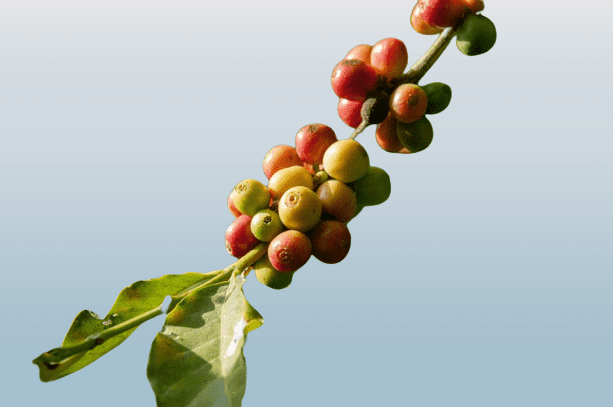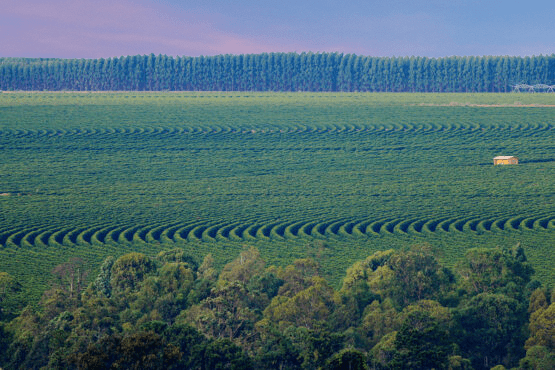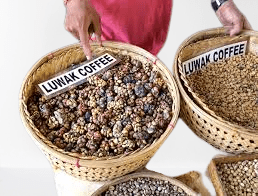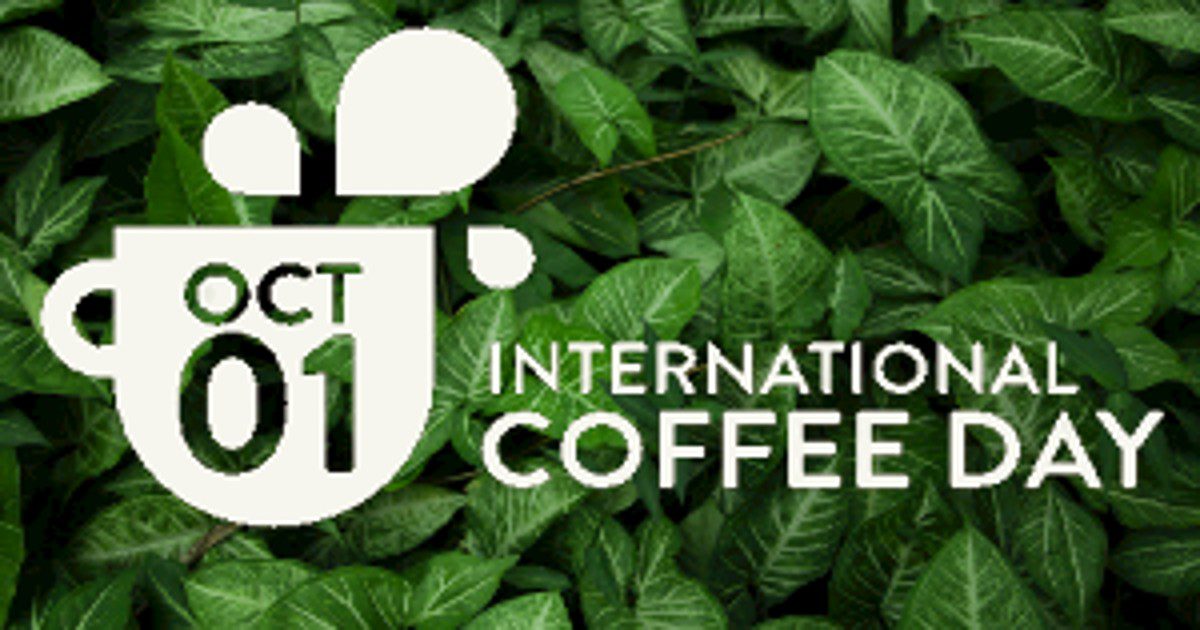International Coffee Day: International coffee day falls on the 1st October, each and every year. International coffee day is a global celebration for coffee lovers to come together and celebrate their love of the beverage whilst supporting coffee farmers, whose crop is their livelihoods. International coffee day event aims to raise awareness of the incredible work of those involved in the coffee industry and promote the fair trade of coffee. In 2023, International coffee day will be celebrated on 1st October, Sunday.
International Coffee Day
International coffee day is a very recent celebration. Launching in Milan at Expo 2015, International coffee day event was set up by the International Coffee Organization, the main intergovernmental organization for coffee, whose goal it is to bring together exporting and importing governments to fight challenges in the coffee world.

International coffee day is celebrated with the 77 Member States of the ICO (International Coffee Organization ) and dozens of coffee associations from around the world. The International Coffee Organization (ICO) was set up in 1963 in London, under the auspices of the United Nations (UN) due to the economic importance of coffee. It administers the International Coffee Agreement (ICA), an important instrument for development cooperation. International Coffee Day is a celebration of the coffee sector’s diversity, quality and passion. It is an opportunity for coffee lovers to share their love of the beverage and support the millions of farmers whose livelihoods depend on the aromatic crop.

The coffee sector is a crucial anchor for development and a driver of prosperity and sustainability. Producing and drinking coffee helps to make the world a better place by generating jobs and income in over 60 coffee producing countries and for millions of people worldwide engaged with the coffee sector.
History of International coffee day
According to International coffee day historical records, Coffee is originally from Ethiopia, and its discovery in Africa comes with an interesting story. Around the 700s AD, a herd of goats started acting strangely, almost as if they were dancing. Their owner, Kaldi, discovered that they were eating a sort of red bean and concluded that was the cause of their behavior. Kaldi decided to share his findings with a monk who required something that could help him to stay awake all night as he prayed; but another story claims that the monk refused and threw the beans into the fire and the pleasing aroma that came from it was just wonderful.
Suddenly, coffee made its way through the north into Yemen in the 15 Century where the beans arrived by the name “Mocha.” Shortly after, they became well known in Egypt, Persia, and Turkey as “wine of Araby” and coffee houses started to open by the name of “Schools of the Wise.”
Next, Arabia became the gatekeeper for coffee, and these beans began a large-scale coffee farming in Southern India. In 1560 coffee made its way through Europe and quickly became popular, until Pope Clement VIII decided that the drink must be satanic. Under inspection, he gave into the glory of the beverage by baptism and declared it a Christian drink. As the 1600s rolled on and coffee houses sprung up all over Europe, the beans followed the wave of colonization and found themselves in America.
Finally, after a long time among humanity in 2014, The “International Coffee Organization” declared October 1, as International Coffee Day, an occasion to celebrate coffee as a beverage and raise awareness for the plight of the coffee growers.
Unknown Facts about Coffee on International coffee day
On this International Coffee Day, let us know some most interesting and unknown facts about Coffee.
Coffee is one of the most popular beverages in the world. We all love the delicious beverage, so much so that billions of cups are consumed all over the world each year! Whether it’s drunk as part of a daily routine or savoured whilst enjoying a catchup with friends, it’s no secret that it forms a large part of our every day lives.
1 – Coffee is thought to date back to 800 A.D., where it was discovered by 9th century goat herders. It was said that they noticed their goats eating the plant and afterwards it appeared like they were ‘dancing’. Fascinated by the results, the goat herder tried them himself and discovered that it made him excitable too.
2 – Ethiopia is widely considered to be the epicentre of where coffee came from. If you’ve ever googled “coffee history”, you will have come across the famous story of how coffee was founded in Ethiopia by Kaldi, an Ethiopian goat herder, around 800 AD.
3 – He wandered over to his goats to see them acting very strangely. They were energised and excited after eating some berries from a tree. After trying the berries himself, and also feeling excitable and alert, Kaldi took these berries to a monk.
4 – The monks exclaimed that it was the work of the devil and threw the berries into the fire. In doing so, a beautiful, heavenly aroma was released and the berries were quickly raked from the fire and crushed into embers. Realising their mistake, the berries were then placed into a jug and covered with hot water for preservation.
5 – The monks then went on to drink this lovely new concoction, only to realise it helped them stay awake during nightly devotions and prayers. Of course, this is probably just a wonderful legend and the history of coffee is more likely to lie with the Oromo/Galla people, from a nomadic tribe.
6 – However, it’s largely believed that coffee beans were originally exported from Ethiopia to Yemen. Later, Yemeni traders brought coffee plants back to their homeland and began to grow them there.
7 – As it’s thought that coffee originated in Ethiopia, it’s also believed it made its way north, across the red sea into Yemen in the 15th Century. It then started to be grown here in the Yemeni district of Arabia, and by the 16th century it was known in Persia, Egypt, Syria, and Turkey.
8 – It was immensely popular for its qualities to help improve alertness and wakefulness, allowing people to devote more time to spiritual matters and praying.
9 – The world’s first coffee house was opened in Constantinople in 1475, now known as Istanbul. Coffee was drunk at home as part of the daily routine, as well as to show hospitality to guests. Outside of the home, people visited coffee houses to not only drink coffee but to engage in conversation, listen to music, watch performers, play chess, gossip and catch up on news. Without the modern technologies we have today, coffee houses quickly became the epicentre for exchanging and gaining information. They were often referred to as “Schools of the Wise.”
And with thousands of pilgrims visiting Mecca each year from all over the world, knowledge of this “wine of Araby”, which it quickly became referred to, began to spread.
10 – This exotic beverage certainly caused a stir for European travellers who were filled with intrigue and fascination. So, by the 17th century, coffee had made its way to Europe and became increasingly popular across the continent.
11 – European coffee history begins in Italy, where it was imported from the Ottoman Empire. In particular, Venetian merchants contributed to the widespread popularity of coffee in European regions and in 1645, the first ever European coffee house was opened in Venice. Drinking coffee became a great commodity, especially for wealthy people.
12 – Through the Dutch East India Company and British East India Company, coffee also became very popular in England. The first coffee house in England opened in Oxford in 1651 and many others quickly popped up, particularly in London. Coffee houses were strictly for men only, where they could discuss business and news, as well as socialise. It is said that many business ventures and ideas started in London coffee houses.
13 – Coffee was then introduced to Paris, France in 1669 by Suleyman Aga, the ambassador to the court of King Louis XIV of France. He was armed with bags of coffee described as a “magical beverage”. Only two years later in 1671, an Armenian who went by the name Pascal, opened a coffee-drinking booth at the fair of St.-Germain. Visitors very quickly learned to look for the “petit noir” a name that still endures. This marked the beginning of Parisian coffee houses, which of course, inspired coffee houses to open across France.
Over the next 30 years, coffee became cultural staples in Austria, Germany, Spain, and the rest of Europe. However, growing coffee in Europe was a struggle, due to its naturally colder climates. European traders would later start to grow coffee elsewhere.
14 – The founder of the Colony of Virginia, Captain John Smith, introduced coffee to other settlers of Jamestown in 1607. However, it wasn’t well received at first and tea was much more preferred.
15 – In 1670, Dorothy Jones became the first person to receive a license to sell coffee in Boston. By the mid-1700’s, many taverns were also dubbed as coffeehouses, but tea was still the drink of choice. It was only when a rebellion against Great Britain caused all the tea to be thrown into the sea and it was considered unpatriotic to drink it any longer. Coffee then became increasingly popular.
16 – The New World’s hot, tropical weather was seen as a new ideal for the cultivation of coffee, and coffee plantations quickly spread throughout Central America, with their first coffee harvest occurring in 1726.
17 – Latin American countries also have ideal coffee-growing conditions, such as a good balance of sunshine and rain, high and humid temperatures, and rich soil. By the mid-18th century, Latin American countries evolved into being some of the top coffee producers, able to clear big tropical forests, ready for plantations. And today, Brazil is the world’s biggest coffee producer.
18 – Despite it being called a ‘bean’, coffee is actually a fruit. The ‘beans’ grow on a bush and are found in the centre of a berry, known as a coffee cherry.
19 – This coffee fact may surprise you, but infamous composer, Beethoven, loved coffee! Apparently, he was very obsessive about it though and would have precisely 60 beans per cup and would spend the time counting out each and every one.
20 – It’s widely known that Brazil is one of the biggest coffee hotspots of the world, but did you know it’s responsible for around a third of all the coffee in the world? Brazil is the number one coffee producer, followed by Vietnam and Colombia.

21 – Where Brazil may grow the most, Finland drink the most coffee! On average they drink 12kg per person, per year which works out to around an impressive 1,680 cups each a year.
22 – Despite coffee being renowned as one of the most popular drinks to have with your breakfast (followed by tea), prior to the 18th century, beer was actually enjoyed with the first meal of the day!
23 – In 1932, the Brazilian government didn’t have enough money to send their athletes to the Olympics, so they funded the trip by selling coffee. They loaded up a ship of coffee beans with the aim to sell it to California on their way.
24 – Before coffee was discovered to be a delicious beverage it was actually a food. East African tribes would grind the berries then mix them with animal fat and eat them.
25 – There are two types of coffee bean that are used for drinking – Robusta and Arabica. Arabica is more widely favoured due to its lower acidity and smoother taste, whereas Robusta is more acidic and bitter.
26 – For a coffee to be classed as decaf, it needs to have less than 0.3% caffeine.
27 – Where it’s thought to be a fact that Britons adore their tea, it may shock you to learn that the UK alone drinks around 95 million cups of coffee per day!
28 – The decaffeination process helps to create our favourite fizzy drinks. Once caffeine has been removed (for decaf coffee), the caffeine will usually be sold to fizzy drink or pharmaceutical companies.
29 – The most expensive coffee in the world is Kopi Luwak and as of 2019, it cost $600 per pound. Native to Indonesia, the coffee is roasted after being eaten, digested and expelled by a Palm Civet. It’s said that they only eat the very best, sweetest and freshest coffee cherries and when ingested, it’s naturally fermented which gives it a distinctive flavour.
30 – The largest cup of coffee in the world was 22,739.14 litres. Yes, you heard right! The largest cup of coffee ever made was 22,739.14 litres. The brew made in Colombia on 15th June 2019, took fifty people more than a month to make. It currently also holds the Guinness World Record.
31 – Coffee is consumed in such great quantities, it is the world’s 2nd largest traded commodity, surpassed only by crude oil. It is our most beloved beverage after water. It’s worth well over $100 billion worldwide.
32 – Good coffee growing conditions are dependent on variables such as high altitudes, tropical climates and rich soil. Therefore, despite all the rich and diverse landscapes of the Continental United States, Hawaii is the only American state suitable for growing coffee plants. It has been producing coffee even before it was a state. (Recently, though, farms in California did start growing coffee bushes!)
33 – Coffee was banned in Mecca in 1511, quite soon after its first appearance in Ethiopia. It was believed to stimulate radical thinking and idleness.
34 – Coffee stays warm 20% longer when you add cream
35 – In ancient Arab culture, apparently still applicable in Saudi Arabia, woman can allegedly find legal ‘grounds’ for divorce if her husband fails to bring her fresh coffee in the morning.
36 – The word espresso comes from Italian and means “expressed” or “forced out”. Espresso is made by forcing very hot water under high pressure through finely ground, compacted coffee.
37 – Coffee beans grow on a bush. They are actually the pit of a berry, which makes them a fruit. There are two main varieties of beans: green and red. Red beans have a nicer smell and are less acidic. They are used to produce lighter coffees. The longer that coffee beans have been roasted, the healthier they are. Decaffeinated coffee comes from a chemical process where the caffeine is taken out of the beans. The caffeine is then often sold to Coca-Cola, a major buyer.
38 – “Kopi Luwak” is the most expensive coffee in the world. It comes from Indonesia and is made from beans digested from the Asian Palm Civet. In other words, it comes from cat poop. It sells for €350 and up per kilo!

39 – The “Big Four” roasting companies – Kraft, P&G, Sara Lee and Nestle – buy about 50% of the coffee produced worldwide.
Karnataka is the largest producer of coffee in India. This article will briefly throw light on production in India.
Karnataka – largest producer of coffee in India
- 71% of India’s coffee is produced in Karnataka.
- The largest producing region of Karnataka is Kodagu (Coorg) district.
- Kodagu district of Karnataka produces 33% of the total produced in India.
- The other main producing regions of Karnataka are Chikmagalur, Hassan, Shimoga, and Mysore.
Coffee Production – India
- After Karnataka, the next state which accounts for the largest producer of coffee in India is Kerala.
- Kerala produces around 21% of India’s total production.
- Both Karnataka and Kerala together account for around 90% of the total produced in India.
- The third highest producing state in India is Tamil Nadu which accounts for 5% of the total produced in India.
- Coffee is also grown in Northeastern India, Odisha, and Andhra Pradesh.
- The most well-known species grown in India are Robusta and Arabica.
- Arabica species was introduced in the Baba Budan Giri hill ranges of Karnataka in the 17th century.
- Coffee from India is exported to other countries such as Germany, France, Russia, Spain, Slovenia, Belgium, Netherlands, Greece, the USA, and the United Kingdom.
Do you know India has about 250,000 coffee growers? Of these, 98% are small bean farmers with limited resources but great potential. Almost 80% of the produced in India is exported, while the rest, 20%, is consumed within the country. So, we are here with a list of most popular Producing States in India.
If we talk about its origin, coffee cultivation was first introduced in 1670. Moreover, India’s first coffee beans were brought to Chikmagalur of Karnataka in India, first.
Karnataka, Kerala, and Tamil Nadu are India’s traditional yet top largest producer of coffee in India. These states are popular to produce the rich in taste or simply the best varieties in India.
Top 10 largest producer of coffee in India
Karnataka – Karnataka is the largest producer of coffee in India with production volume 2.33 lakh metric tons. The state produces India’s 70% coffee. Moreover, in the fiscal year 2022, the state’s total annual production in India was compiled at 2.33 lakh metric tons.
Kodagu district accounts for 44% of the total coffee area in Karnataka. Moreover, its annual production was counted as 1,06,921/ha. Small farmers own this district’s coffee farms.
Kerala – Kerala is the second largest producer of coffee in India with 67700 metric tons annual production. The state is known for growing two main varieties: Arabica and Robusta. Moreover, the state is accountable for annual production of 67700 metric tons.
Tamil Nadu – The state of Tamil Nadu is the third largest producer of coffee in India with 17,875 metric tonnes. In the fiscal year 2022, Tamil Nadu produced 17,875 Metric tonnes of Arabica variety. Moreover, if we talk specifically about districts, Pulneys and Bodi districts produced the maximum Arabica variety in over 16,000 hectares of the crop area.
Andhra Pradesh – The state of Andhra Pradesh is the fourth largest producer of coffee in India with 7,425 metric tons annual production. The state is famous for its “Araku” variety. The plants in this state are popular to grow under silver oak trees and jackfruit. The state occupied the fourth position as it produced 7,425 metric tons.
Odisha – Odisha is the fifth largest producer of coffee in India with 550 metric tonnes of annual production. Rayagada, Koraput, Phulbani and Keonjhar are the leading regions in Odisha where the highest production occurs. Moreover, Odisha’s production stood at 550 metric tonnes in the current fiscal year.
Tripura – Tripura is the sixth largest producer of coffee in India with 12 to 14 metric tons of production. The state is famous for producing famous varieties in India, particularly Arabica and Robusta. The state’s Coffee Producing States is somewhere around 12 to 14 metric tons.
Nagaland – Nagaland is the seventh largest producer of coffee in India with 9,832 hectares of land. The state uses about 9,832 hectares of land to grow coffee. Moreover, the state’s area under coffee production is expected to reach 50,000 hectares by 2030.
Meghalaya – Meghalaya is the eight largest producer of coffee in India with wide production of robusta and arabica varieties. Robusta is grown in low altitude areas ranging between 500-1000 metres. Besides this, the Arabica coffee variety is grown at high altitudes between 1000-1500 metres.
Manipur – Manipur is the ninth largest producer of coffee in India with Coffea Arabica and Coffea canephora. Coffea Arabica and Coffea canephora are the most popular varieties grown in Manipur. As per officials, 240 ha under Arabica and 7 ha under Robusta.
Assam – Assam is the tenth largest producer of coffee in India. The state began its first production in Cachar district in 1953. Although Assam has been famous for its tea garden, the state has a huge capacity to grow fresh coffee beans as well. Moreover, Assam’s production started in Cachar district in 1953. Kaziranga National Park is famous for popular varieties of plantations in Assam.
Hope you liked the above story about International coffee day. For more interesting articles, please visit read4knowledge.
